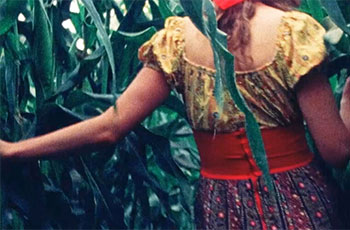Restored by The Film Foundation’s World Cinema Project and Fundación Televisa at L’Immagine Ritrovata in collaboration with Filmoteca UNAM and in association with Televisa S. de R.L. de C.V. Funding provided by the Golden Globe Foundation. Special thanks to Guillermo del Toro.

Martin Scorsese created the World Cinema Project (WCP) in 2007 recognizing the urgent need to preserve, restore, and provide access to films from around the world. To date, 70 films from Africa, Asia, Eastern Europe, Central America, South America, and the Middle East have been restored, preserved, and exhibited for global audiences. As part of the WCP, the African Film Heritage Project (AFHP) was launched in 2017 in partnership with the Pan African Federation of Filmmakers (FEPACI) and UNESCO, in collaboration with Cineteca di Bologna, to preserve the legacy of African cinema. The WCP also supports Restoration Film Schools, intensive, results-oriented workshops allowing students and professionals to learn the art and science of film restoration and preservation. Titles are available for exhibition rental by clicking "Book This Film."
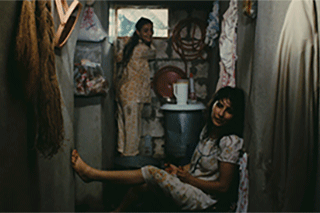
STARS IN BROAD DAYLIGHT
NUJUM AL-NAHAR
Director: Ossama Mohammed
WRITTEN BY: Ossama Mohammed
EDITING: Antoinette Azarieh
DIRECTOR OF PHOTOGRAPHY: Abdulqader Sharbaji
STARRING: Abdellatif Abdul Hamid, Zuhair Abdulkarim, Sabah As-Salem, Saad Eddin Baqdoones, Fuad Ghazi, Muhsen Ghazi, Radwan Jamoos, Zuhair Ramadan, Maha Saleh
COUNTRY OF PRODUCTION: Syria
LANGUAGE: Arabic with English subtitles
COLOR INFO: Color
RUNNING TIME: 105 minutes
PRODUCTION COMPANY: National Film Organization
Restored by The Film Foundation’s World Cinema Project and Cineteca di Bologna at L’Immagine Ritrovata laboratory, in collaboration with Ossama Mohammed. Funding provided by the Hobson/Lucas Family Foundation.
NOTES ON THE RESTORATION:
The restoration used the best surviving element outside Syria, a 35mm positive print acquired by a German television network in the 1990s. Ossama Mohammed approved the grading. Restoration work was completed in 2024 by L’Immagine Ritrovata.
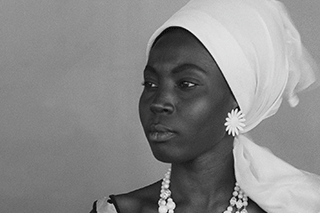
BLACK GIRL
LA NOIRE DE...
Director: Ousmane Sembène
WRITTEN BY: Ousmane Sembène
EDITING: André Gaudier
DIRECTOR OF PHOTOGRAPHY: Christian Lacoste
ASSISTANT CAMERAMAN: Ibrahima Barro
STARRING: Mbissine Thérèse Diop, Anne-Marie Jelinek, Robert Fontaine, Momar Nar Sene, Ibrahima Boy
COUNTRY OF PRODUCTION: Senegal
LANGUAGE: French with English Subtitles
COLOR INFO: B&W
RUNNING TIME: 65 minutes
PRODUCTION COMPANY: Les Films Domirev
Restored by Cineteca di Bologna/ L’Immagine Ritrovata laboratory, in association with the Sembène Estate, Institut National de l’Audiovisuel, INA, Eclair laboratories and the Centre National de Cinématographie. Restoration funded by The Film Foundation’s World Cinema Project.
Black Girl, or La Noire de…, was the first of Ousmane Sembène’s pictures to make a real impact in the west, and I can clearly remember the effect it had when it opened in New York in 1969, three years after it came out in Senegal. An astonishing movie—so ferocious, so haunting, and so unlike anything we’d ever seen.
- Martin Scorsese, May 2015
I am not for “social realism” nor for a “cinema of signs” with slogans and demonstrations. For me revolutionary cinema is something else. If we managed to set up a group of cinéastes who all make cinema directed in the same direction, I believe that then we could influence a little bit of the destinies of our country. I think that the film, more than the book, can crystallize an awakening within the masses. I am personally inspired much by the example of Brecht.
- Ousmane Sembène
In 1961, shortly after Senegal declared its independence from France, Ousmane Sembène, a self-educated dockworker, assigned himself an impossible task: to create a true African cinema as a “night school” for his people. is explosive debut—a film described as the first African feature (true in spirit, if not in fact)—inspired a form of fearless, socially engaged, and uncompromising cinema across the globe. La Noire de … (Black Girl) follows a young girl lured to France by a white bourgeoisie couple, who keep her locked in their flat as a housekeeper. As the daily and unrelenting indignities unfold, Diouana, the title character, literally loses her voice. Sembène highlights her silence, familiar to the voiceless across the globe, yet reveals Diouana’s immense dignity and, by the end, agency. He draws visually from the French Nouvelle Vague (in a film about racial and class divides, the black-and-white photography carries new power) and spiritually from the Italian neorealists, but the film’s heart and soul is African. By turning around the camera—used for 100 years to demean Black people—Sembène offers us the first humanistic gaze at Africans.
But the film (shot mostly in Dakar) also remains a seminal work of cinematic art, as it unfolds with startling precision and decisiveness, providing revealing, unforgettable and richly metaphoric perspective on a never-beforeseen Africa. La Noire de … became a sensation at festivals from Carthage to Pyongyang, and Sembène became the first non-French recipient of the Prix Jean Vigo, given previously to Alain Resnais, Chris Marker, Claude Chabrol and Jean-Luc Godard. In the film’s culminating moment, a boy grabs a mask and haunts the white businessman who entrapped Diouana. As this child pulls the mask from his face, we wonder: Will a new Africa emerge? Nearly 50 years after its initial screenings, the visionary La Noire de … remains a gorgeous, shocking and of-the-moment African story.
- Samba Gadjigo and Jason Silverman
NOTES ON THE RESTORATION:
The restoration of La Noire de… was made possible through the use of the original camera and sound negative provided by INA and the Sembène Estate and preserved at the CNC – Archives Françaises du Film.
In order to try and minimize the presence of visible spots (due to processing errors and aggravated by time) and scratches on the image, the camera negative was wet-scanned at 4K resolution. Due mainly to these two issues, the digital restoration required considerable efforts. A vintage print preserved at the Cinémathèque Française was used as reference.
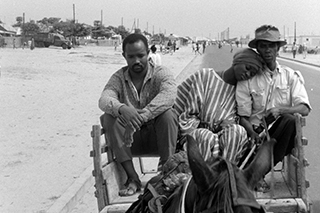
Borom Sarret
Director: Ousmane Sembène
WRITTEN BY: Ousmane Sembene
EDITING: Andre Gaudier
DIRECTOR OF PHOTOGRAPHY: Christian Lacoste
ASSISTANT CAMERAMAN: Ibrahima Barro
FROM: INA/Éclair/Cineteca/Sembene Family
STARRING: Ly Abdoulay, Albourah
COUNTRY OF PRODUCTION: Senegal
LANGUAGE: French and Wolof
COLOR INFO: Black and White
RUNNING TIME: 22'
ON COMPANY: INA
Restored in 2013 by Cineteca di Bologna/L’Immagine Ritrovata laboratory and Laboratoires Éclair, in association with The Film Foundation’s World Cinema Project, the Institut National de l’Audiovisuel, and the Sembène Estate. Restoration funded by Doha Film Institute.
I think given the fact that there is such a diversity of languages in Africa, we, African filmmakers, will have to find our own way in order to ensure that the message be understood by everyone, or we’ll have to find a language that comes from the image and the gestures. I think I would go as far as to say that we will have to go back and see some of the silent films and in that way find new inspiration.
Contrary to what people think, we talk a lot in Africa but we talk when it’s time to talk. There are also those who say blacks spend all of their time dancing – but we dance for reasons which are our own.
Dancing is not a flaw in itself, but I never see an engineer dancing in front of his machine, and a continent or a people do not spend its time dancing.
All of this means that the African filmmaker’s work is very important – he must find a way that is his own, he must find his own symbols, even create symbols if he has to.
[...] I then realized Borom Sarret, my first true short film. It is the story of a cartman who is, to some extent, the taxi driver of a horse-drawn cart. Confronted by a rich customer in a residential district prohibited to such a type of vehicle, a cop stops him, makes a complaint, and seizes the cart. Relieved of his livelihood, the poor fellow remains sadly in his place. His wife entrusts the guardianship of their children to him while saying to him “We will eat this evening…” For this I got the first work prize at the Festival of Tours in 1963.
-Ousmane Sembène
NOTES ON THE RESTORATION:
The restoration of Borom Sarret was made possible through the use of the original camera and sound negatives provided by INA and preserved at Éclair Laboratories.
The film was scanned in 4K at Éclair Laboratories and restored at L’Immagine Ritrovata laboratory. The image was digitally stabilized and cleaned, and all wear marks were eliminated. Image grading helped recover the richness of the original cinematography.
After scanning, the sound was digitally cleaned and background noise reduction was applied to eliminate all wear marks, without losing any of the dynamic features of the original soundtrack.
The World Cinema Foundation would like to specially thank Alain Sembène and the Sembène Family for facilitating the restoration process.
Image: © Courtesy of INA
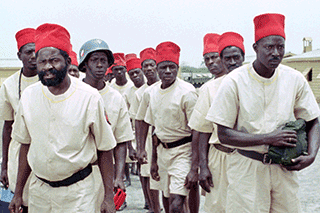
CAMP DE THIAROYE
Director: Ousmane Sembène and Thierno Faty Sow
WRITTEN BY: Ousmane Sembène and Thierno Faty Sow
EDITING: Kahéna Attia
DIRECTOR OF PHOTOGRAPHY: Smaïl Lakhdar-Hamina
PRODUCER: Mustafa Ben Jemja, Ouzid Dahmane, Mamadou Mbengue
MUSICAL DIRECTOR: Ismaël Lô
STARRING: Sidiki Bakaba, Hamed Camara, Ismaila Cissé, Ababacar Sy Cissé, Moussa Cissoko, Eloi Coly, Ismaël Lô, Pierre Londiche
COUNTRY OF PRODUCTION: Senegal, Algeria, Tunisia
LANGUAGE: German, French, Wolof, English
COLOR INFO: Color
RUNNING TIME: 153 minutes
PRODUCER: Mustafa Ben Jemja, Ouzid Dahmane, Mamadou Mbengue
Restored by The Film Foundation’s World Cinema Project and Cineteca di Bologna at L’Immagine Ritrovata laboratory in association with the Tunisian Ministry of Cultural Affairs and the Senegalese Ministry of Culture and Historical Heritage. With special thanks to Mohamed Challouf and Association Ciné-Sud Patrimoine. Restoration funded by the Hobson/Lucas Family Foundation.
This restoration is part of the African Film Heritage Project, an initiative created by The Film Foundation’s World Cinema Project, the Pan African Federation of Filmmakers and UNESCO – in collaboration with Cineteca di Bologna – to help locate, restore, and disseminate African cinema.
NOTES ON THE RESTORATION:
CAMP DE THAIROYE was restored in 4K at L'Immagine Ritrovata using a second-generation internegative and the original sound negative, preserved at the Tunisian Ministry of Cultural Affairs.
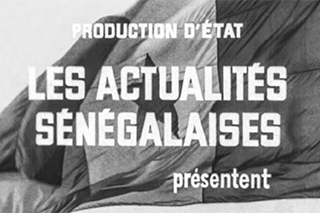
IFE / 3ÈME FESTIVAL DES ARTS
Director: Paulin Soumanou Vieyra
COUNTRY OF PRODUCTION: Senegal
LANGUAGE: French with English subtitles
COLOR INFO: Black and White
RUNNING TIME: 13 minutes
Restored by The Film Foundation’s World Cinema Project and Cineteca di Bologna at L’Immagine Ritrovata laboratory, in collaboration with the Ministère de la Culture et du Patrimoine Historique de Sénégal – Direction du Cinéma. Restoration funded by the Hobson/Lucas Family Foundation.
This restoration is part of the African Film Heritage Project, an initiative created by The Film Foundation's World Cinema Project, the Pan African Federation of Filmmakers and UNESCO―in collaboration with Cineteca di Bologna―to help locate, restore, and disseminate African cinema.
NOTES ON THE RESTORATION:
The 4K restoration was completed using a 16mm print preserved by the Direction du Cinéma in Senegal. With special thanks to Tiziana Manfredi and Marco Lena.

LE SÉNÉGAL ET LE FESTIVAL MONDIAL DES ARTS NÈGRES
Director: Paulin Soumanou Vieyra
COUNTRY OF PRODUCTION: Senegal
LANGUAGE: French with English subtitles
COLOR INFO: Black and White
RUNNING TIME: 28 minutes
Restored by The Film Foundation’s World Cinema Project and Cineteca di Bologna at L’Immagine Ritrovata laboratory, in collaboration with the Ministère de la Culture et du Patrimoine Historique de Sénégal – Direction du Cinéma. Restoration funded by the Hobson/Lucas Family Foundation.
This restoration is part of the African Film Heritage Project, an initiative created by The Film Foundation's World Cinema Project, the Pan African Federation of Filmmakers and UNESCO―in collaboration with Cineteca di Bologna―to help locate, restore, and disseminate African cinema.
NOTES ON THE RESTORATION:
The 4K restoration was completed using a 16mm print preserved by the Direction du Cinéma in Senegal. With special thanks to Tiziana Manfredi and Marco Lena.
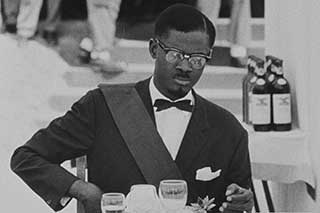
LUMUMBA, DEATH OF A PROPHET
LUMUMBA, LA MORT DU PROPHÈTE
Director: Raoul Peck
WRITTEN BY: Raoul Peck
COUNTRY OF PRODUCTION: France
LANGUAGE: French with English subtitles
COLOR INFO: Color/Black and White
RUNNING TIME: 69 minutes
PRODUCTION COMPANY: Velvet Film
Restored by The Film Foundation’s World Cinema Project and Cineteca di Bologna at L’Immagine Ritrovata/L’Image Retrouvée in collaboration with Velvet Film and supervised by Raoul Peck.
Funding provided by the Hobson/Lucas Family Foundation.
This restoration is part of the African Film Heritage Project, an initiative created by The Film Foundation’s World Cinema Project, the Pan African Federation of Filmmakers and UNESCO – in collaboration with Cineteca di Bologna – to help locate, restore, and disseminate African cinema.
NOTES ON THE RESTORATION:
LUMUMBA, DEATH OF A PROPHET was restored in 4K using the original 16mm camera and sound negatives.
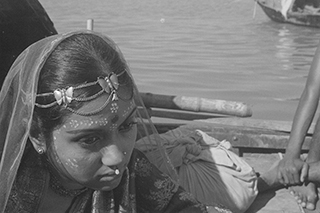
River Called Titas, A
TITAS EKTI NADIR NAAM
Director: Ritwik Ghatak
WRITTEN BY: Advaita Malla Burman, Ritwik Ghatak
EDITING: Basheer Hussain
DIRECTOR OF PHOTOGRAPHY: Baby Islam
PRODUCER: Habibur Rahman Khan
MUSICAL DIRECTOR: Ustad Bahadur Khan
STARRING: Kabari Choudhury (Rajar Jhi), Roushan Jamil (Mother), Probir Mitra (Kishore), Ritwik Ghatak (Tilakchand), Rani Sarkar (Mungli), Sufia Rustam (Udaytara), Rosi Smad (Basanti)
COUNTRY OF PRODUCTION: India
LANGUAGE: Bengali with French/English subtitles
COLOR INFO: Black and White
RUNNING TIME: 158 minutes
ON COMPANY: Ribatan Ghatak/Ritwik Memorial Trust; National Film Archive of India; Bundesarchiv-Filmarchiv
PRODUCER: Habibur Rahman Khan
Restored in 2010 by Cineteca di Bologna /L’Immagine Ritrovata laboratory, in association with Ritwik Memorial Trust, the National Film Archive of India, and The Film Foundation’s World Cinema Project. Additional film elements provided by the Bundesarchiv-Filmarchiv. Restoration funded by Doha Film Institute.
If you were eighteen years old, growing up in New Delhi, a student of cinema, a cinephile or a plain film snob, it was given that you would swoon over the film-maker Ritwik Ghatak and spend endless hours in the Delhi University canteen discussing his films, his alcoholism, and his eventual death from Tuberculosis. An ‘avant garde’ Writer and Director, Ghatak had caught the imagination of many of us who carried Mao’s Red Book’ and quoted liberally from it (in English) at the drop of a hat. After all, didn’t Ghatak (a card carrying Communist) film the extreme poverty and the cultural extinction of Bengal by Imperialism? Because of the political ‘din’ surrounding much of Ghatak’s work, ironically the work itself, as opposed to the man’s personality and politics, got neglected by the legion of his die-hard fans (me included!). It was only years later when I saw his epic, A River Called Titas, that I swooned for totally different reasons. The film is a work of pure genius. A passionate elegy for a dying culture, it moved me profoundly, and continues to haunt me to this day. Based on a novel by the Bengali author Advaita Barman and adapted for the screen by Ghatak, A River Called Titas, tells the raw and powerful story of a dying river and a dying culture.
–Deepa Mehta, May 2010
NOTES ON THE RESTORATION:
The restoration of A River called Titas used the camera and sound negatives and a positive print provided by the Ritwik Memorial Trust and held at the National Film Archive of India. As the original negative is incomplete and some reels were severely damaged, a combined lavender and a positive print provided by the Bundesarchiv-Filmarchiv were also used. The digital restoration produced a new 35 mm internegative.
Image: © Courtesy of Ritaban Ghatak - Ritwik Memorial Trust
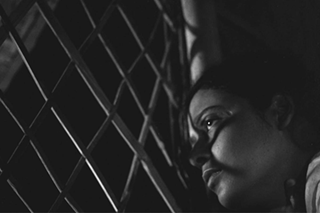
CLOUD-CAPPED STAR, THE
MEGHE DHAKA TARA
Director: Ritwik Ghatak
WRITTEN BY: Ritwik Ghatak
EDITING: Ramesh Joshi
DIRECTOR OF PHOTOGRAPHY: Dinen Gupta
PRODUCER: Ritwik Ghatak
ART DIRECTOR: Ravi Chatterjee
STARRING: Supriya Choudhury, Anil Chatterjee, Bijon Bhattacharya, Gita De, Gita Ghatak, Dwiju Bhawal, Niranjan Roy
COUNTRY OF PRODUCTION: India
LANGUAGE: Bengali
COLOR INFO: Black and White
RUNNING TIME: 127 minutes
PRODUCER: Ritwik Ghatak
Restored by the Criterion Collection in cooperation with The Film Foundation’s World Cinema Project and the Cineteca di Bologna.
NOTES ON THE RESTORATION:
A new digital transfer was created from the 35 mm original camera negative, preserved at the National Film Archive of India in Pune. This element includes several shots inserted from a duplicate negative. A 35 mm print from the Library of Congress was used for sections of the film where the original camera negative was damaged or incomplete.
The original monaural soundtrack was remastered from the Library of Congress’s print and a digital source from the British Film Institute
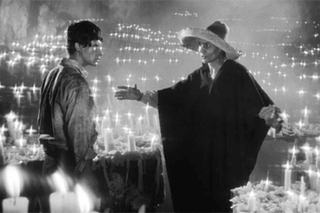
MACARIO
Director: Roberto Gavaldón
EDITING: Gloria Schoemann
DIRECTOR OF PHOTOGRAPHY: Gabriel Figueroa
ADAPTED BY: Emilio Carballido, Roberto Gavaldón
MUSICAL DIRECTOR: Raúl Lavista
STARRING: Ignacio López Tarso, Pina Pellicer, Enrique Lucero, José Gálvez, José Luis Jiménez, Mario Alberto Rodríguez, Consuelo Frank
COUNTRY OF PRODUCTION: Mexico
LANGUAGE: Spanish with English subtitles
COLOR INFO: B&W
RUNNING TIME: 91 minutes
NOTES ON THE RESTORATION:
MACARIO was restored from the original camera and sound negatives preserved at Televisa. Image scanning at 4K resolution and audio digitization work was completed by Filmoteca UNAM. Restoration of the picture and sound was carried out at L'Immagine Ritrovata in 2023.
Special thanks to Gabriel Figueroa Flores for supervising the color grading.
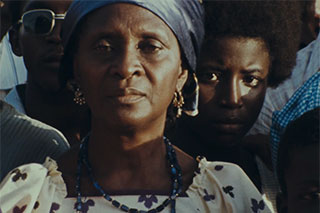
O REGRESSO DE AMÍLCAR CABRAL
Director: Sana Na N'Hada, José Bolama, Josefina Crato, Djalma Fettermann, Flora Gomes
COUNTRY OF PRODUCTION: Guinea-Bissau
LANGUAGE: Portuguese, Guinea-Bissau Creole, Mandika, French
COLOR INFO: Color
Restored by The Film Foundation’s World Cinema Project and Cineteca di Bologna at L’Immagine Ritrovata laboratory in association with Cooperativa de Produçao Cinematografica e Audiovisual GEBA FILMES. Funding provided by the Hobson/Lucas Family Foundation.
This restoration is part of the African Film Heritage Project, an initiative created by The Film Foundation’s World Cinema Project, the Pan African Federation of Filmmakers and UNESCO – in collaboration with Cineteca di Bologna – to help locate, restore, and disseminate African cinema.
NOTES ON THE RESTORATION:
O REGRESSO DE AMÍLCAR CABRAL was restored in 4K from a 16mm color reversal print and the original 16mm soundtrack negative, preserved at the Svenska Filminstitutet. Color grading was supervised by Flora Gomes and Sana na N'HADA. Special thanks to Arsenal – Institut für Film und Videokunst.
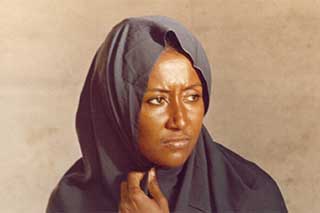
SAMBIZANGA
Director: Sarah Maldoror
EDITING: Georges Klotz
DIRECTOR OF PHOTOGRAPHY: Claude Agostini
STARRING: Elisa Andrade, Domingos De Oliveira, Jean M’Vondo, Adelino Nelumba, Benoît Moutsila, Tala Ngongo, Lopes Rodrigues, Henriette Meya, Manuel Videira
COUNTRY OF PRODUCTION: Angola, France
LANGUAGE: Portuguese, Lingala and Kimbundu with English subtitles
COLOR INFO: Color
RUNNING TIME: 96 minutes
Restored by The Film Foundation’s World Cinema Project and Cineteca di Bologna at L’Image Retrouvée in association with Éditions René Chateau and the family of Sarah Maldoror.
Funding provided by Hobson/Lucas Family Foundation.
This restoration is part of the African Film Heritage Project, an initiative created by The Film Foundation’s World Cinema Project, the Pan African Federation of Filmmakers and UNESCO – in collaboration with Cineteca di Bologna – to help locate, restore, and disseminate African cinema.
NOTES ON THE RESTORATION:
Restored in 4K from the original 35mm negatives. Color grading was supervised by Annouchka De Andrade and cinematographer Jean-François Robin.
With special thanks to Annouchka De Andrade and Henda Ducados.
